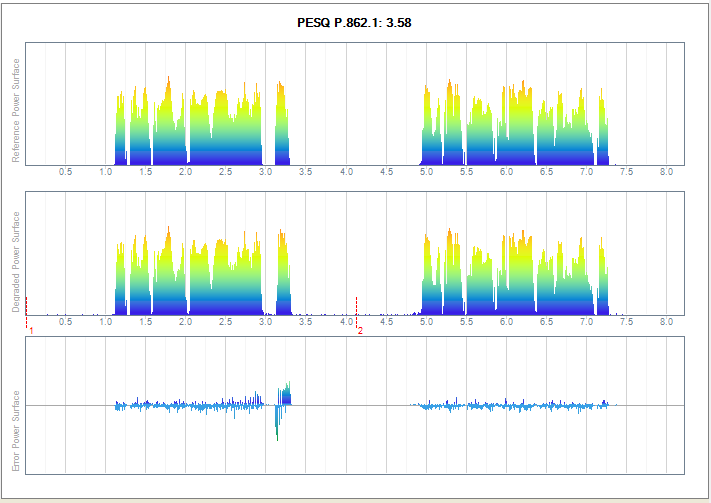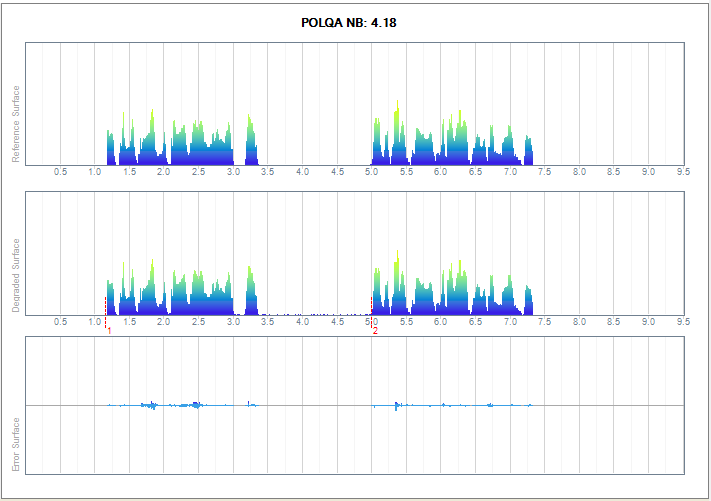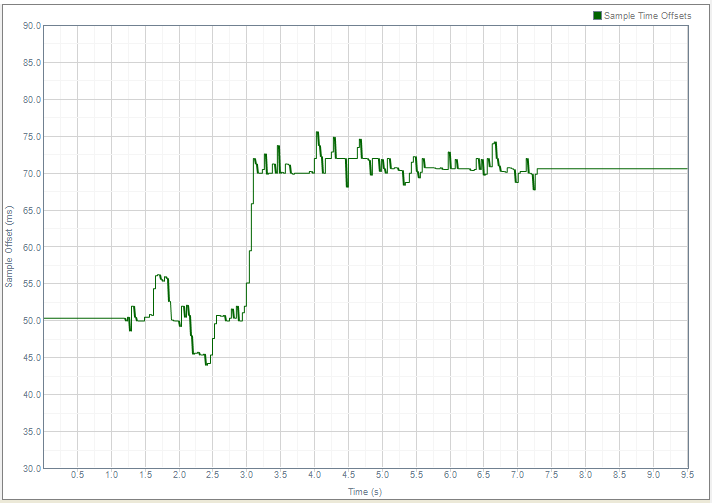The time alignment algorithm in POLQA
The time alignment algorithm in POLQA was designed to be much better than that in PESQ. This example comes from a G.711 connection through an ATA in a test lab. There are no audible impairments but why is POLQA narrowband (NB) showing a score of 4.18 compared to the PESQ P.862.1 score of 3.58?
Looking at our PESQ 2D view, it is apparent that there is some impairment at the end of the first utterance. This impairment does not show in the POLQA view.
If we look at POLQA’s frame time offset view then we can see a 20ms jitter buffer extension occurred at about 3 seconds. This corresponds to the short period of silence just before the end of the first utterance.
PESQ’s time alignment algorithm does not identify the timing change in the short silence. The last sound appears as error – hence the lower score.
POLQA correctly identifies the timing change
POLQA correctly identifies the timing change and the score corresponds with what we hear. This ATA jitter buffer algorithm is working well. The change in timing occurs in a short period of silence. You will only know that if you listen to the file or evaluate it with POLQA.
Contact Opale Systems or your distributor for more information.


